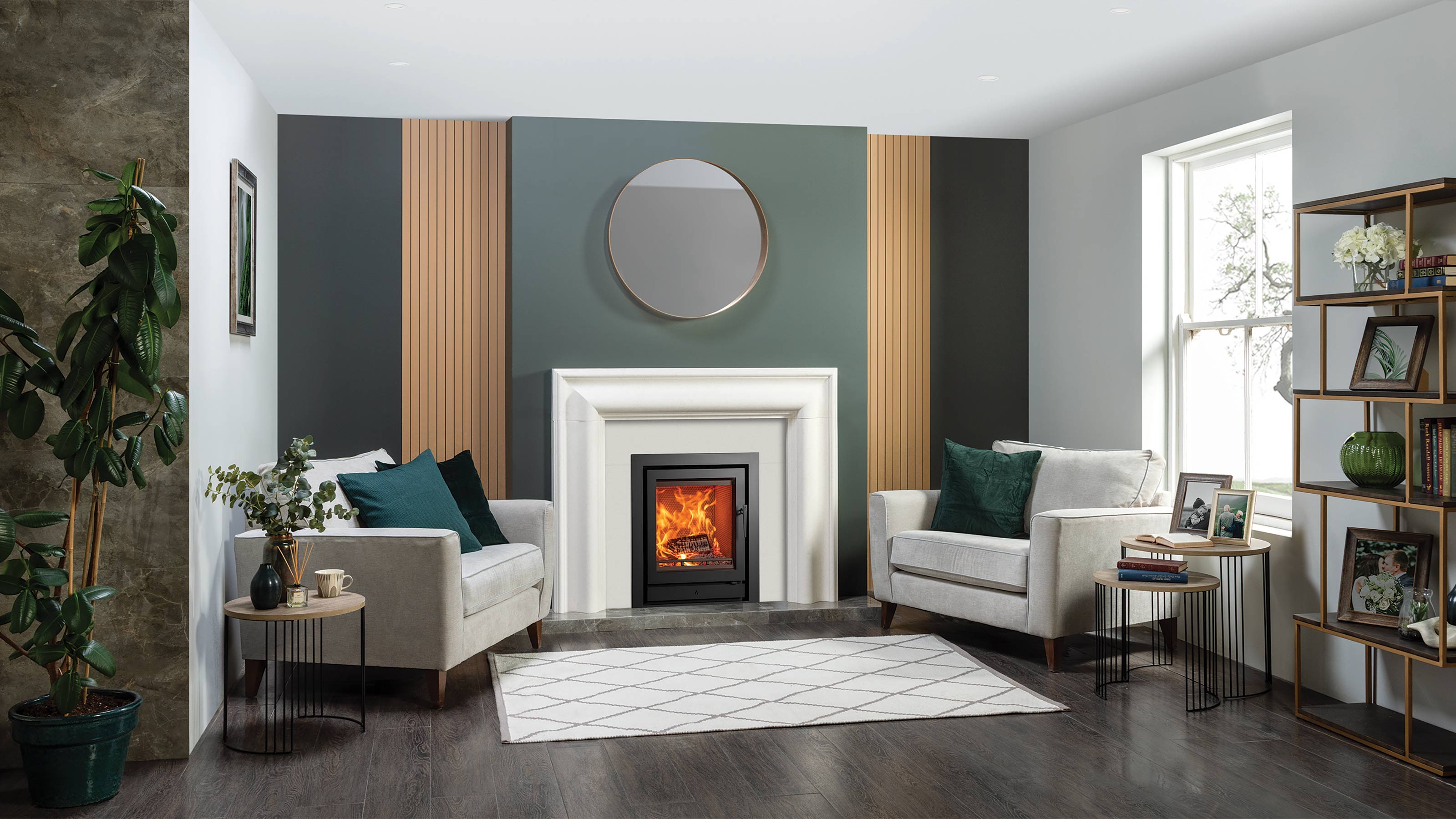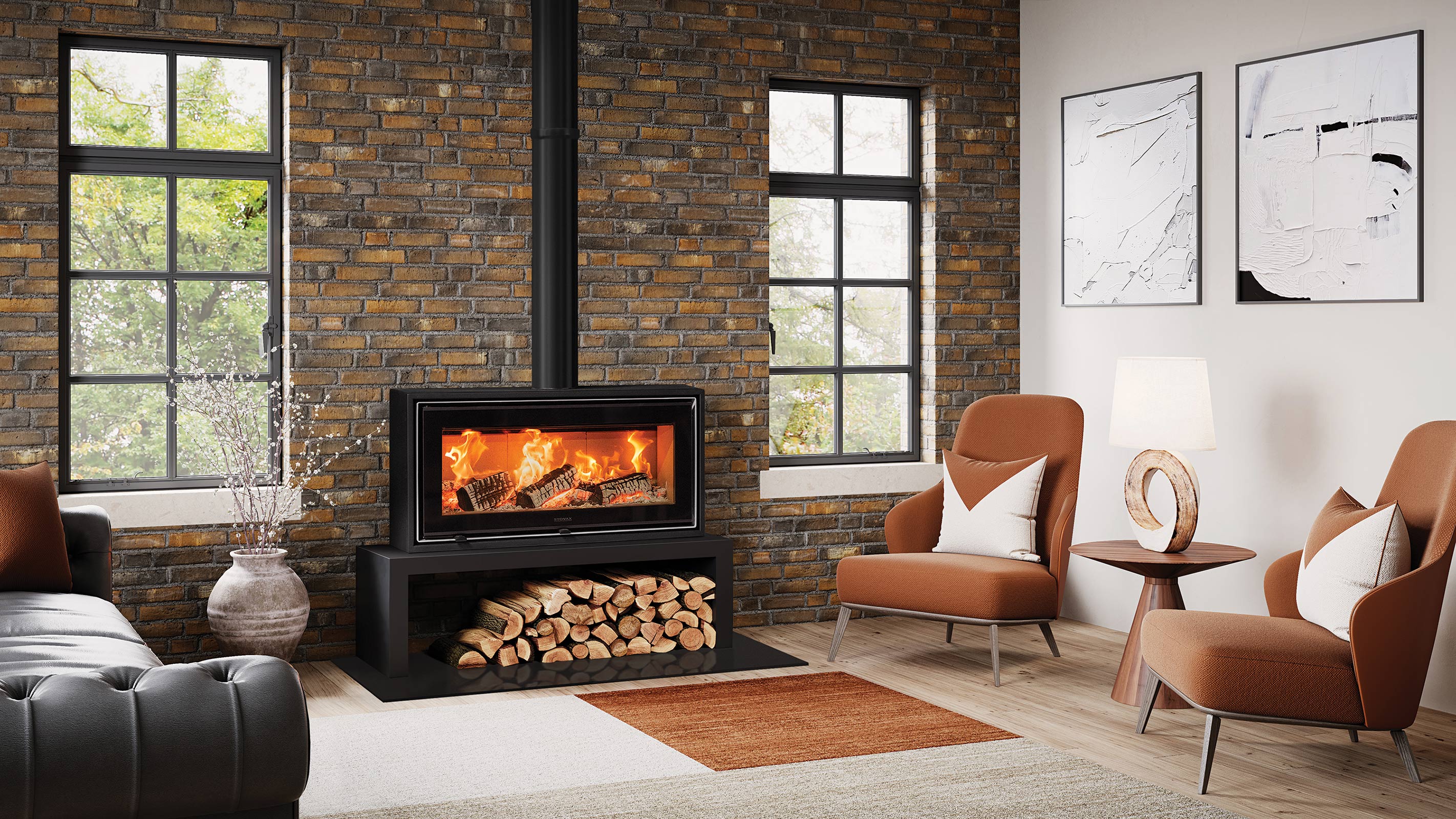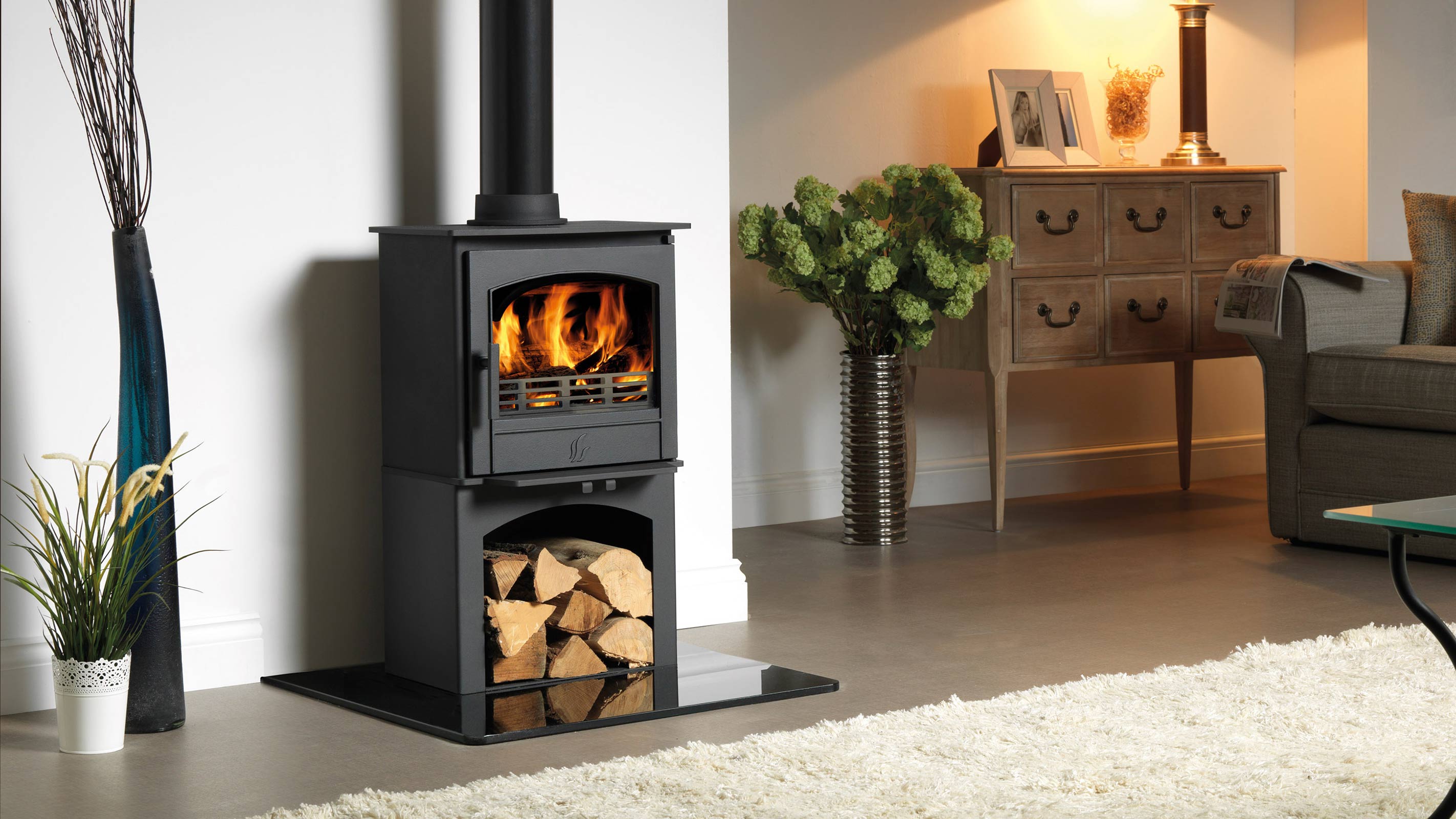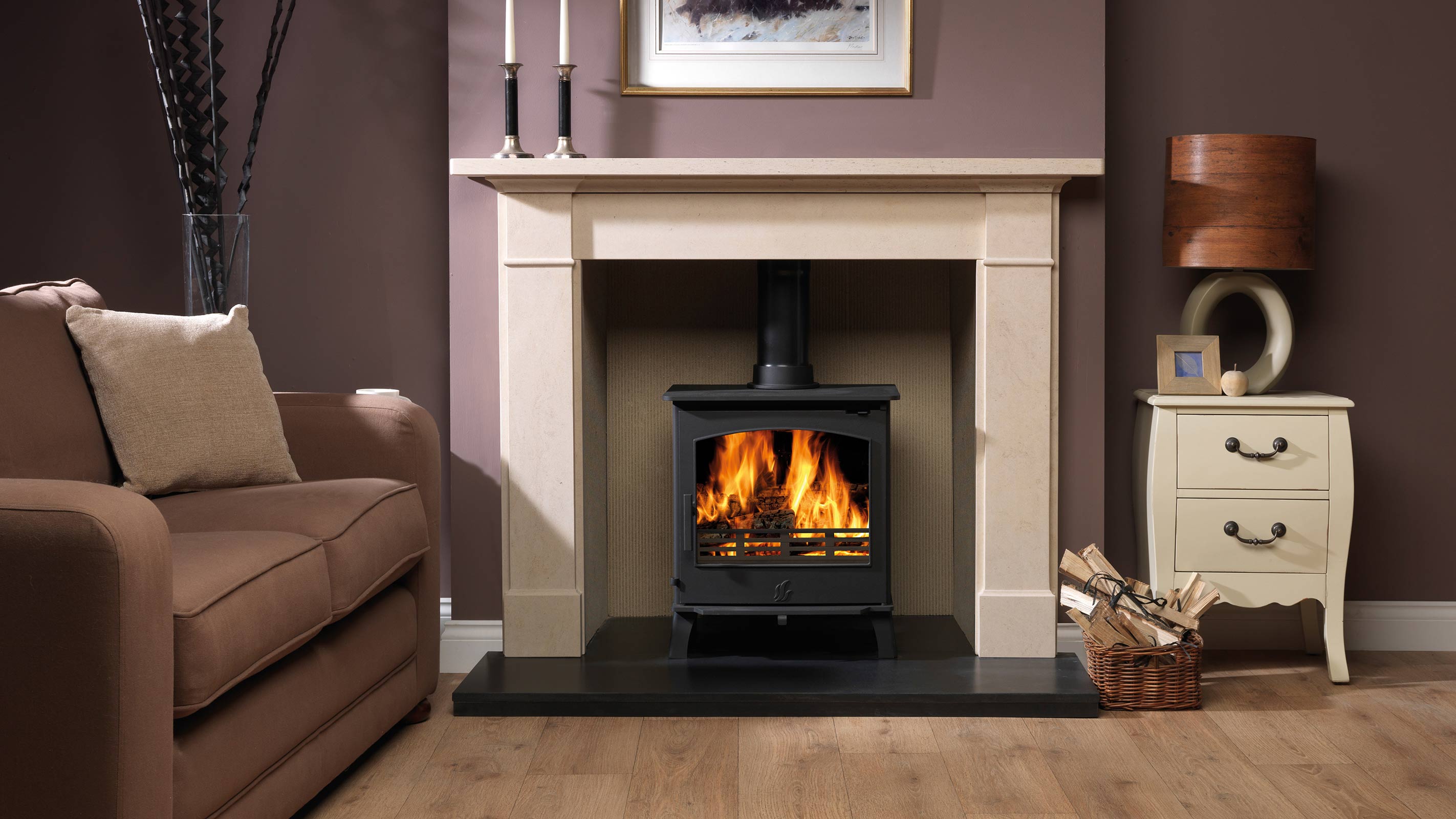What size wood burner do I need? How to buy the right model
Have you been left asking 'what size wood burner do I need?' Our simple guide will ensure you know exactly what model of log burning stove will be best suited to heat your home

What size wood burner do I need? This is one of the most commonly asked questions asked by anyone considering buying a log burning stove for their home — and for good reason. Unless you choose the right size wood burner you could well end up paying for a heat source that is inadequate or overpowering for the space it is being fitted in.
The number of people opting to install log burning stoves has really increased in recent years and it isn't hard to see why. Today's log burning stoves are not only highly efficient, they also make the ideal focal point and are a great way to heat a room — plus they can work well alongside other low carbon heating solutions, such as heat pumps.
However, if you are about to start shopping for a log burning stove, there are some considerations you need to be aware of. Not only will you need to familiarise yourself with the rules and regulations regarding log burning stoves in your area, but you will also need to take into account the type of property you live in — and, of course, the size of log burning stove you will need.
This quick guide explains exactly how to calculate what the correct wood burner size will be for your home.
What size wood burner do I need for my house?
The size of wood burner you choose will very much depend on the size of of the room it is being fitted in. Predictably, a larger house, room or space will require a larger log burner to effectively heat the space than a smaller one would. That said, bear in mind that the size of your house is not the only factor to consider when choosing a wood burner.
Don't be tempted to buy the largest stove possible — this isn’t necessarily the best option.
Although it is possible to calculate the size of stove you will need yourself, if you are having it professionally installed it is likely your supplier will be able to advise you — some even carry out site surveys. In addition, they should be able to give you an idea of what your wood burning stove installation costs will be.
"When your site survey is performed by your installer, factors such as the house’s insulation or the age of the home, how many open-plan and closed room layouts there are, double-glazed windows and so on will all be taken into account to confirm how much heat you will need for that living space," explains Mike Coke, Biomass Products Development Manager at Stovax.

Do open plan spaces need bigger wood burners?
The layout of the space you are installing your log burning stove into will play a large role in what size model you will need to opt for. If you have a multi-level home, or one that is largely open-plan in its layout, a larger wood burner may be necessary to effectively heat the space.
"Larger rooms tend to require a bigger appliance and greater heat output, while smaller rooms require the opposite," says Mike Coke. "It is important to size the stove correctly for the most efficient use, but this really needs to be done by a professional."
If you are using a stove in a very large, open-plan space it will be worthwhile considering a stove fan — the best stove fans can really help to distribute the heat produced by a log burner around a room.

How do I calculate what size wood burner I need?
Wood burners are rated by their output. The output is measured in kilowatts (kW). Generally, the output of a wood burner ranges from 4kW to 14kW.
"As a rough guide and starting point, to achieve a comfortable room temperature of around 21°C when the air temperature outside your house is 0°C, you will need approximately 1kW of heat output for every 14 cubic meters of space," explains Mike Coke. "Measure the length, width and height of your room and multiply the three figures together. Divide the sum by 14, and this figure will roughly indicate the kW you require."
It is important to note that these are approximate measurements and it is best to consult a professional to determine the exact size wood burner needed for your home. Factors such as the level of insulation, wall construction, the number of window or door openings, and features such as open stairwells and split levels will all have a bearing.
In addition to size, it's also important to consider the type of wood burner that will be best for your home. Wood burners come in two main types: freestanding and inset (sometimes also called cassette stoves). Freestanding wood burners are placed on the floor and are great for larger rooms, while inset wood burners are placed inside an existing fireplace, taking up less space. Freestanding stoves tend to give out more heat than inset models.
Wood burner costs really vary and it although it isn't just their size that influences their price, it does play a part. One the whole, though, larger, more powerful wood burners will generally be more expensive than smaller, less powerful models.

Do rooms with larger wood burners need extra ventilation?
it is important to note that if you opt for a stove that is over 5kw, you will need to look into what you log burner ventilation requirements will be.
"The amount of ventilation required will increase dependent on the kW output of the log burner — the higher the kW output of the wood burner, the more air is needed," explains Calvin May, Head of Technical Services at HETAS.
"The size of the air vent opening is dependent on the kW output of the appliance in the room," confirms Stovax's Mike Coke. "In less airtight properties built pre-2008 that have not been renovated, the first 5kW of an appliance doesn’t require an air vent, but every kW over that requires an additional 550mm2 sized hole."
Get the Homebuilding & Renovating Newsletter
Bring your dream home to life with expert advice, how to guides and design inspiration. Sign up for our newsletter and get two free tickets to a Homebuilding & Renovating Show near you.
Natasha was Homebuilding & Renovating’s Associate Content Editor and was a member of the Homebuilding team for over two decades. In her role on Homebuilding & Renovating she imparted her knowledge on a wide range of renovation topics, from window condensation to renovating bathrooms, to removing walls and adding an extension. She continues to write for Homebuilding on these topics, and more. An experienced journalist and renovation expert, she also writes for a number of other homes titles, including Homes & Gardens and Ideal Homes. Over the years Natasha has renovated and carried out a side extension to a Victorian terrace. She is currently living in the rural Edwardian cottage she renovated and extended on a largely DIY basis, living on site for the duration of the project.

